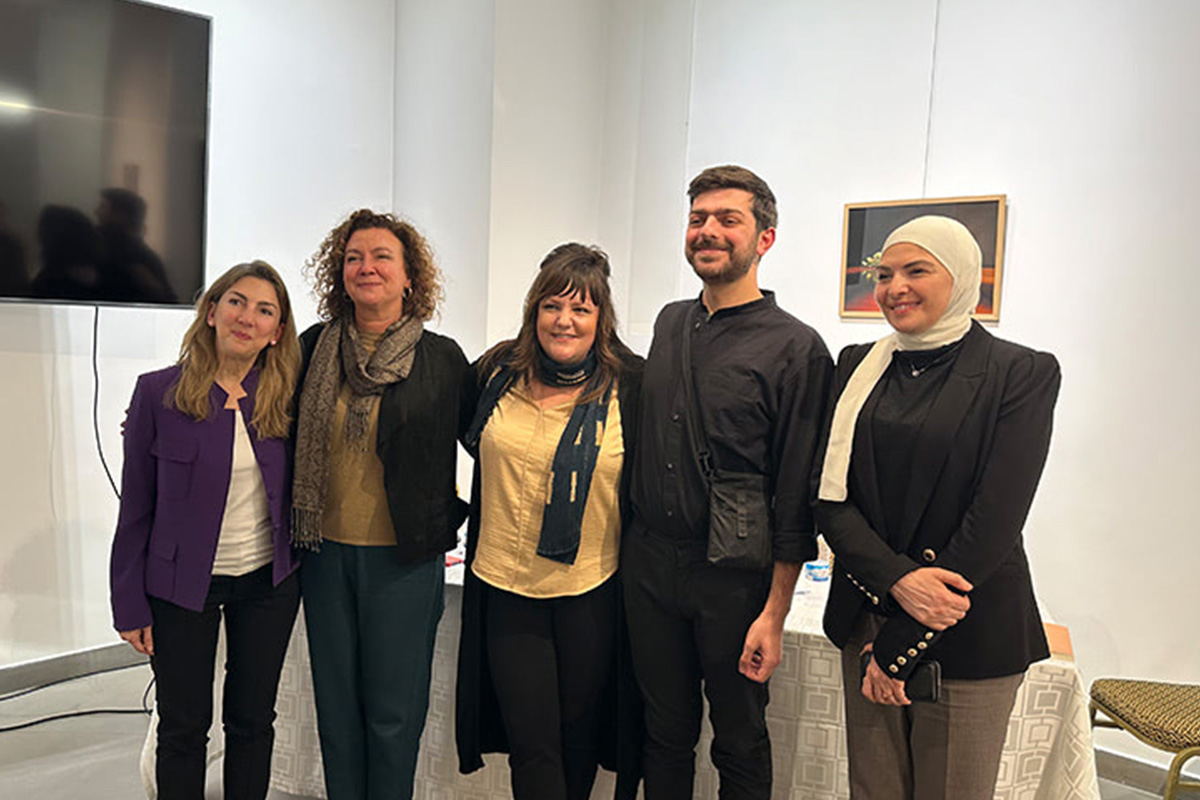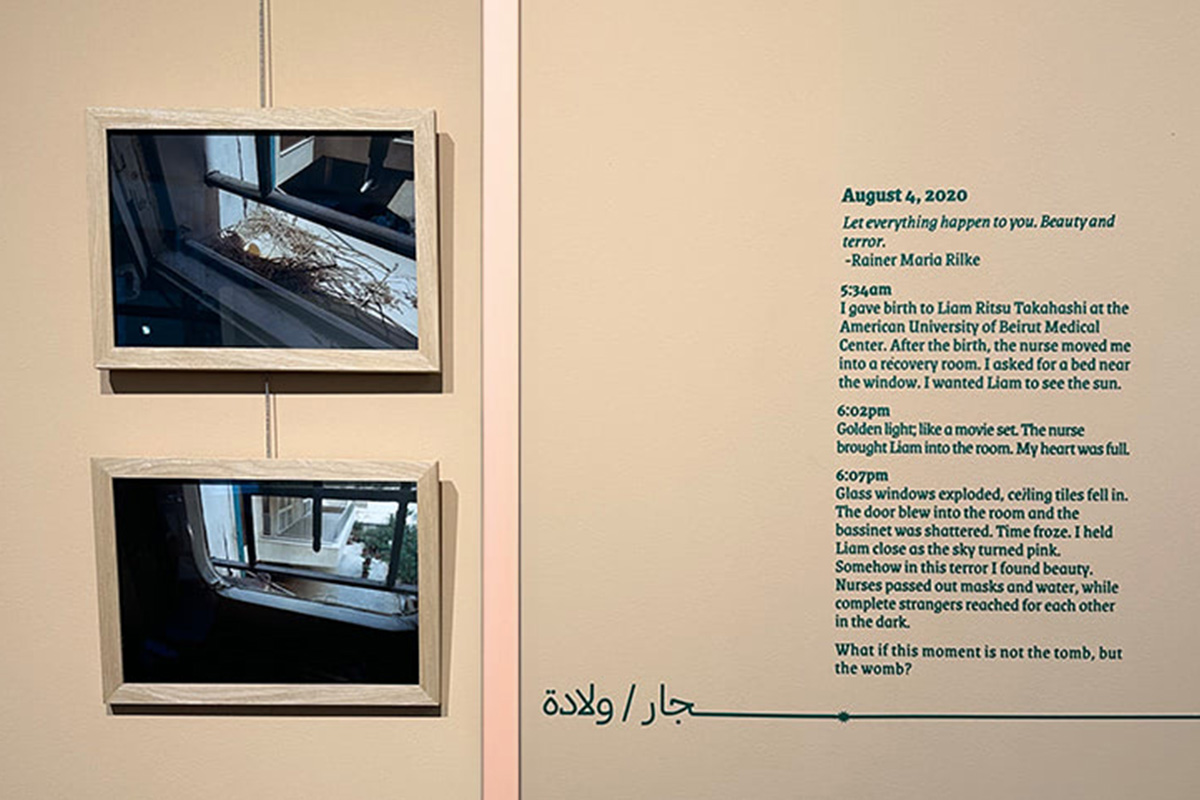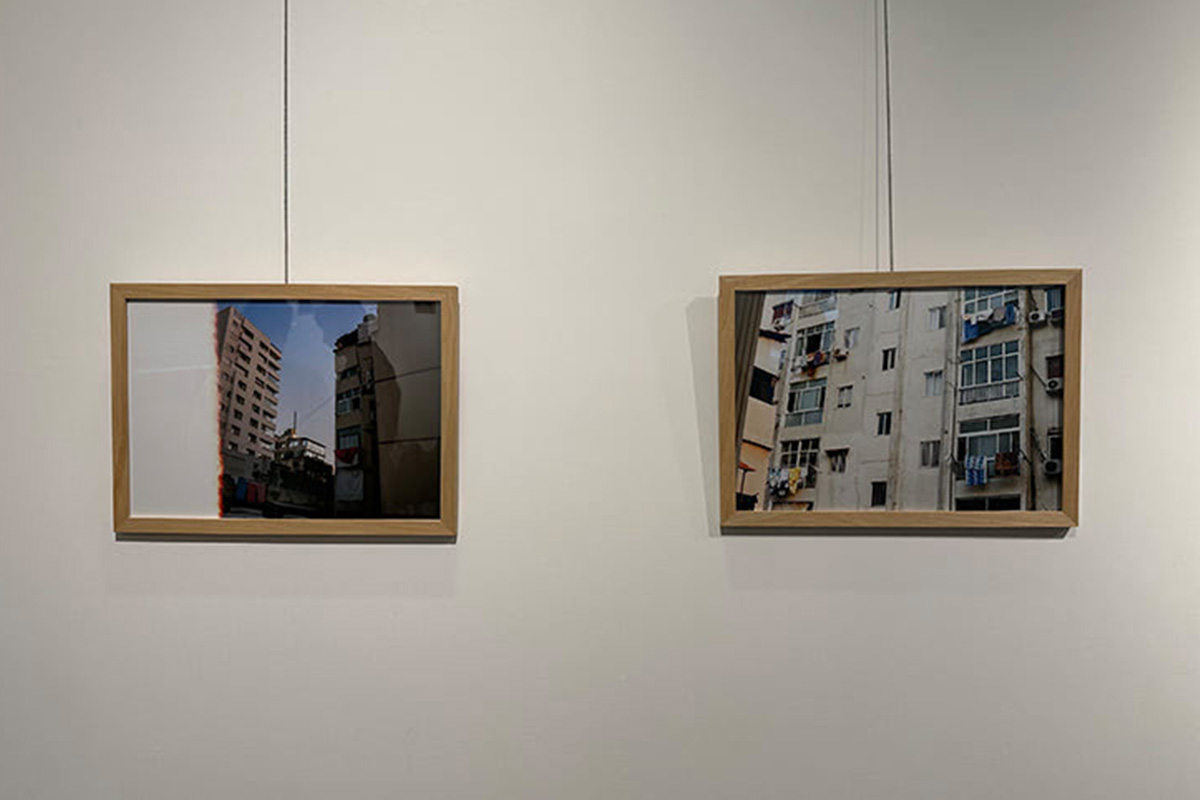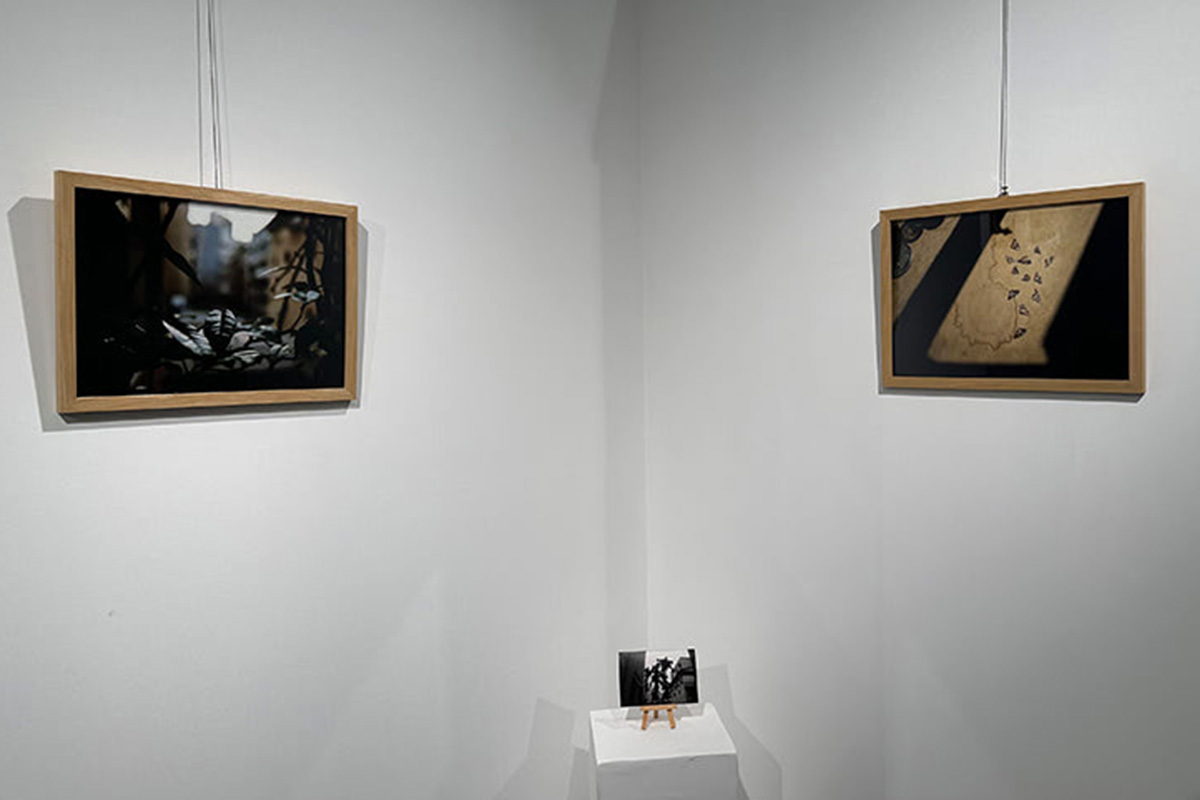The Power of Creative Expression in Times of Crisis
The Institute of Art in the Arab World at the School of Architecture and Design hosts an exhibition exploring the role of photography and art in coping with trauma.
In line with its commitment to promoting dialogue among contemporary global and local scholars and artists, as well as embracing diverse perspectives from the Arab world and its diaspora, LAU’s Institute of Art in the Arab World (IAAW) hosted Like the Delayed Rays of a Star, an exhibition exploring the collective trauma experienced by the people of Lebanon in the wake of the Beirut port explosion.
The institute—directed by Associate Professor at the School of Architecture and Design Yasmine Nachabe Taan—organized the exhibition to present a fresh perspective on Arab art through the lens of American artist, filmmaker and writer Heather M. O’Brien-Takahashi. In this collaboration, both women highlight that “it is not just about trauma and hardship; it’s about the experience of this fateful day unbound by nationality.”
In a series of photographs and videos, the exhibition provided a platform for dialogue and reflection on the August 4 explosion from a new mother’s lens, as the artist herself had given birth to her first child on the day of the devastating blast. It captured the raw emotions and shared experiences of people affected by the tragedy.
“Collaborating with artists and community members, and bringing in artists to speak about their experience in the Arab world creates a bigger and more inclusive space for communication,” Dr. Taan explained. “It allows us to individually process our emotions and find solace in shared incidents.”
O’Brien-Takahashi, who lived in Beirut for six years and is currently an assistant professor at Southern Illinois University, frequently delves into topics such as gender studies, queer theory, family histories, national identities and the tricky nature of memory. “This made her work a fitting choice for the gallery,” said Dr. Taan.
Furthermore, the exhibition served as an intersection between art and medicine, underscoring the ways in which creative expression can contribute to healing and emotional wellbeing. “It sheds light on the importance of interdisciplinary collaboration in addressing societal issues,” added Dr. Taan.
In a panel discussion held during the opening of the exhibition, Associate Professor of Obstetrics and Gynecology at the American University of Beirut Ghina Ghazeeri, who helped O’Brien-Takahashi deliver her baby, reflected on the therapeutic potential of photography as a means of coping with trauma and intense emotions.
“As a fertility specialist, my mission is to help people get pregnant and bear children,” said Dr. Ghazeeri. “I keep going back to that moment when Heather gave birth on a day marked by death, and she sang a lullaby to her baby amidst all the rubble and dust,” she reminisced. “I could only imagine the beauty that will be reflected out of this in her work later on.”
By sharing her narrative in a series of photographs curated alongside LAU graphic design alumnus Georges Hanna (BS ’19), O’Brien-Takahashi opened the door to broader conversations surrounding the universal aspects of motherhood and the societal influences that shape them.
“Some of the images here intimately documented my journey through giving birth and becoming a mother on a day that wasn’t quite celebratory,” she said. “Every photo was carefully handpicked to show the ups and downs of parenthood, from moments of profound joy and connection to moments of exhaustion and vulnerability.”
For Hanna, working with O’Brien-Takahashi revealed how shared experiences of trauma can be powerful. “It’s incredible to think that I’m collaborating with someone who isn’t Lebanese but shares a universal appreciation of the beauty of our city,” he said.
The same sentiment was shared by Nadya Sbaiti, visiting assistant professor in the Department of History at Georgetown University in Qatar. “Through her photography and storytelling, Heather captures the essence of our city and sheds light on the beauty in everyday moments and the significance of home,” she remarked. Reflecting on how she might have been physically injured that day if she had not gone to visit O’Brien-Takahashi at the hospital, Sbaiti said: “Her act of giving life to her son indirectly saved mine.”
According to Dr. Taan, hosting this exhibition made her revisit her own understanding of trauma and its impact on communities collectively.
“In doing so, we’re illustrating LAU’s contribution to facilitating global platforms where artists and scholars can engage in exploring the human experience,” she added.



